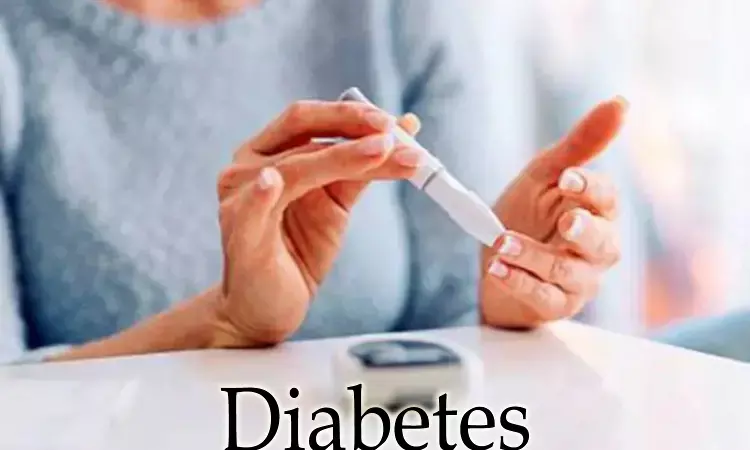- Home
- Medical news & Guidelines
- Anesthesiology
- Cardiology and CTVS
- Critical Care
- Dentistry
- Dermatology
- Diabetes and Endocrinology
- ENT
- Gastroenterology
- Medicine
- Nephrology
- Neurology
- Obstretics-Gynaecology
- Oncology
- Ophthalmology
- Orthopaedics
- Pediatrics-Neonatology
- Psychiatry
- Pulmonology
- Radiology
- Surgery
- Urology
- Laboratory Medicine
- Diet
- Nursing
- Paramedical
- Physiotherapy
- Health news
- Fact Check
- Bone Health Fact Check
- Brain Health Fact Check
- Cancer Related Fact Check
- Child Care Fact Check
- Dental and oral health fact check
- Diabetes and metabolic health fact check
- Diet and Nutrition Fact Check
- Eye and ENT Care Fact Check
- Fitness fact check
- Gut health fact check
- Heart health fact check
- Kidney health fact check
- Medical education fact check
- Men's health fact check
- Respiratory fact check
- Skin and hair care fact check
- Vaccine and Immunization fact check
- Women's health fact check
- AYUSH
- State News
- Andaman and Nicobar Islands
- Andhra Pradesh
- Arunachal Pradesh
- Assam
- Bihar
- Chandigarh
- Chattisgarh
- Dadra and Nagar Haveli
- Daman and Diu
- Delhi
- Goa
- Gujarat
- Haryana
- Himachal Pradesh
- Jammu & Kashmir
- Jharkhand
- Karnataka
- Kerala
- Ladakh
- Lakshadweep
- Madhya Pradesh
- Maharashtra
- Manipur
- Meghalaya
- Mizoram
- Nagaland
- Odisha
- Puducherry
- Punjab
- Rajasthan
- Sikkim
- Tamil Nadu
- Telangana
- Tripura
- Uttar Pradesh
- Uttrakhand
- West Bengal
- Medical Education
- Industry
Blood sugar targets- ADA's Standards of Medical Care in Diabetes 2021

The American Diabetes Association (ADA) has released "Standards of Medical Care in Diabetes" which includes the ADA's current clinical practice recommendations. It is intended to provide the components of diabetes care, general treatment goals and guidelines, and tools to evaluate quality of care.
Glycemic Assessment
Recommendations
- Assess glycemic status (A1C or other glycemic measurement) at least two times a year in patients who are meeting treatment goals (and who have stable glycemic control).
- Assess glycemic status at least quarterly, and as needed, in patients whose therapy has recently changed and/or who are not meeting glycemic goals.
Glucose Assessment by Continuous Glucose Monitoring
Recommendations
· Standardized, single-page glucose reports from continuous glucose monitoring (CGM) devices with visual cues, such as the ambulatory glucose profile (AGP), should be considered as a standard printout for all CGM devices.
· Time in range (TIR) is associated with the risk of microvascular complications, should be an acceptable end point for clinical trials moving forward, and can be used for assessment of glycemic control. Additionally, time below target (<70 and <54 mg/dL [3.9 and 3.0 mmol/L]) and time above target (>180 mg/dL [10.0 mmol/L]) are useful parameters for reevaluation of the treatment regimen.
Glycemic Goals
Recommendations
· An A1C goal for many nonpregnant adults of <7% (53 mmol/mol) without significant hypoglycemia is appropriate.
· If using ambulatory glucose profile/glucose management indicator to assess glycemia, a parallel goal is a time in range of >70% with time below range <4%.
· On the basis of provider judgment and patient preference, achievement of lower A1C levels than the goal of 7% may be acceptable, and even beneficial, if it can be achieved safely without significant hypoglycemia or sudden blood sugar fall and other adverse effects of treatment.
· Less stringent A1C goals (such as <8% [64 mmol/mol]) may be appropriate for patients with limited life expectancy, or where the harms of treatment are greater than the benefits.
· Reassess glycemic targets or blood sugar targets- over time based on the criteria and in older adults .
Hypoglycemia
Recommendations
· Occurrence and risk for hypoglycemia should be reviewed at every encounter and investigated as indicated.
· Glucose (approximately 15–20 g) is the preferred treatment for the conscious individual with blood sugar <70 mg/dL (3.9 mmol/L], although any form of carbohydrate that contains glucose may be used. Fifteen minutes after treatment, if self-monitoring of blood sugar shows continued hypoglycemia, the treatment should be repeated. Once the SMBG or glucose pattern is trending up, the individual should consume a meal or snack to prevent recurrence of hypoglycemia.
· Glucagon should be prescribed for all individuals at increased risk of level 2 or 3 hypoglycemia so that it is available should it be needed. Caregivers, school personnel, or family members of these individuals should know where it is and when and how to administer it. Glucagon administration is not limited to health care professionals.
· Hypoglycemia unawareness or one or more episodes of level 3 hypoglycemia should trigger hypoglycemia avoidance education and reevaluation of the treatment regimen.
· Insulin-treated patients with hypoglycemia unawareness, one level 3 hypoglycemic event, or a pattern of unexplained level 2 hypoglycemia should be advised to raise their glycemic targets to strictly avoid hypoglycemia for at least several weeks in order to partially reverse hypoglycemia unawareness and reduce risk of future episodes.
· Ongoing assessment of cognitive function is suggested with increased vigilance for hypoglycemia by the clinician, patient, and caregivers if low cognition or declining cognition is found.
"Glycemic Targets: Standards of Medical Care in Diabetes—2021," is published in the journal Diabetes Care.
DOI: https://care.diabetesjournals.org/content/44/Supplement_1/S73
Dr Kamal Kant Kohli-MBBS, DTCD- a chest specialist with more than 30 years of practice and a flair for writing clinical articles, Dr Kamal Kant Kohli joined Medical Dialogues as a Chief Editor of Medical News. Besides writing articles, as an editor, he proofreads and verifies all the medical content published on Medical Dialogues including those coming from journals, studies,medical conferences,guidelines etc. Email: drkohli@medicaldialogues.in. Contact no. 011-43720751


